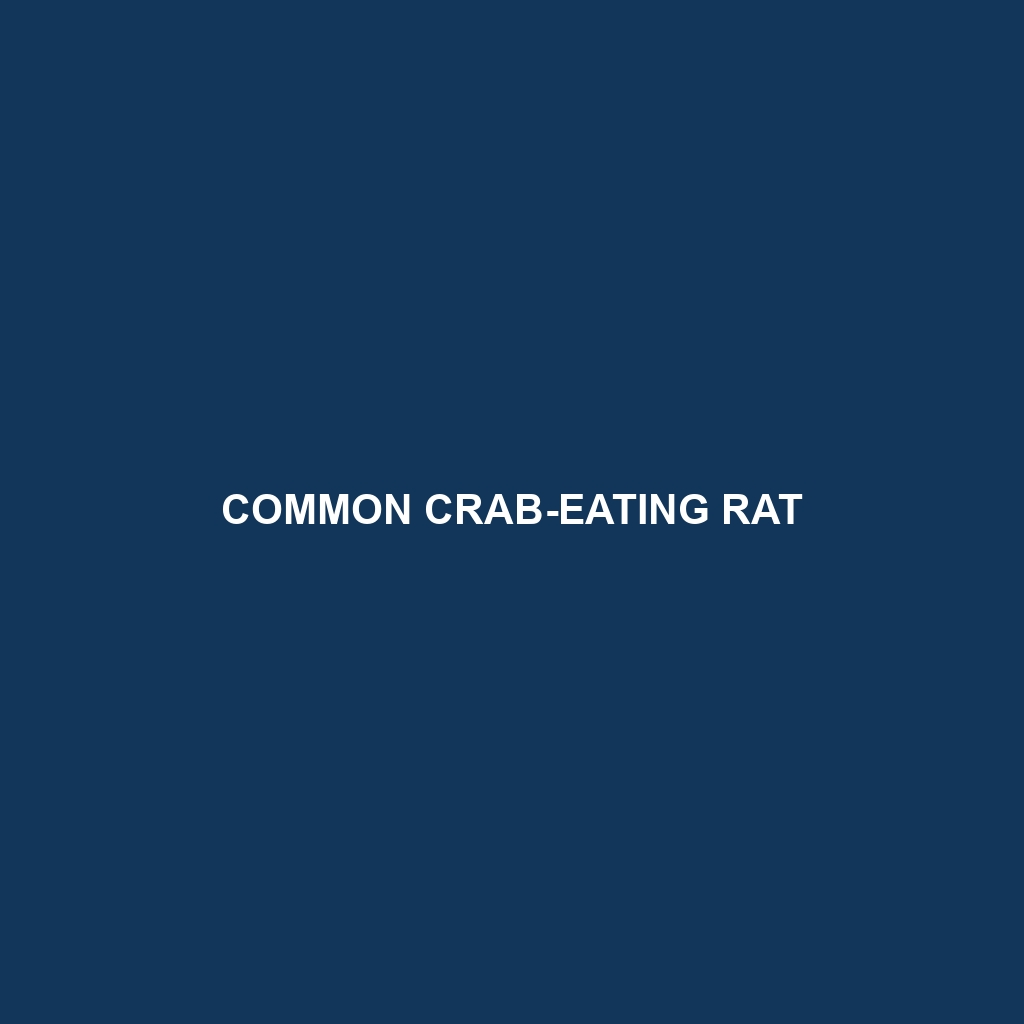Common Name: Common Crab-eating Rat
Scientific Name: Syphacophaga
Habitat:
The Common Crab-eating Rat is primarily found in the coastal regions of Central and South America, particularly in mangroves, wetlands, and riverine habitats. It thrives in areas where freshwater meets saltwater, often inhabiting estuaries and marshlands. These regions provide a rich environment with abundant food sources, essential for the rat’s survival.
Physical Characteristics:
The Common Crab-eating Rat typically measures between 25 to 30 cm in body length, with a tail that can be as long as its body. Its fur is generally a mix of brown and gray, providing excellent camouflage among the mud and foliage of its habitat. The rat has a slender, elongated body with a pointed snout and large, expressive eyes. Notable features include webbed feet that aid in swimming, adapting it perfectly to its coastal environment.
Behavior:
Commonly observed at dusk or dawn, the Common Crab-eating Rat exhibits predominantly nocturnal behaviors. It is known for its agility and ability to navigate its habitat by swimming and climbing. These rats are often seen foraging alone or in small groups, showcasing a social structure that allows them to communicate effectively through vocalizations and scent markings.
Diet:
The diet of the Common Crab-eating Rat primarily consists of a variety of shellfish, crabs, and plant materials found in its wetland habitat. They are opportunistic feeders, often foraging for fruits, seeds, and aquatic plants, adapting their feeding habits to seasonal availability. This flexibility in diet helps them thrive in diverse environments.
Reproduction:
The Common Crab-eating Rat typically breeds throughout the year, with peaks in reproduction during warmer months. Females give birth to litters of 2 to 4 young after a gestation period of about 23 days. Newborns are altricial, meaning they are born hairless and blind, but they develop rapidly and are weaned after about 3 weeks. Parental care is vital during this period, with both parents often taking part in nurturing the offspring.
Conservation Status:
Currently, the Common Crab-eating Rat is categorized as Least Concern on the IUCN Red List. However, ongoing habitat loss due to coastal development and pollution threats could impact its population in the future. Conservation efforts are important to maintain healthy habitats and ensure the species does not move towards a more vulnerable status.
Interesting Facts:
One fascinating fact about the Common Crab-eating Rat is its exceptional swimming ability, which it uses to escape predators and access food sources inaccessible to other animals. Additionally, this species has a unique social structure where individuals may engage in play behavior, reflecting their intelligence and adaptability.
Role in Ecosystem:
The Common Crab-eating Rat plays a significant role in its ecosystem as both a predator and prey. By controlling the populations of crabs and other invertebrates, it helps maintain ecological balance in coastal habitats. Additionally, these rats serve as a food source for larger mammals and birds, underscoring their importance in the food web.
